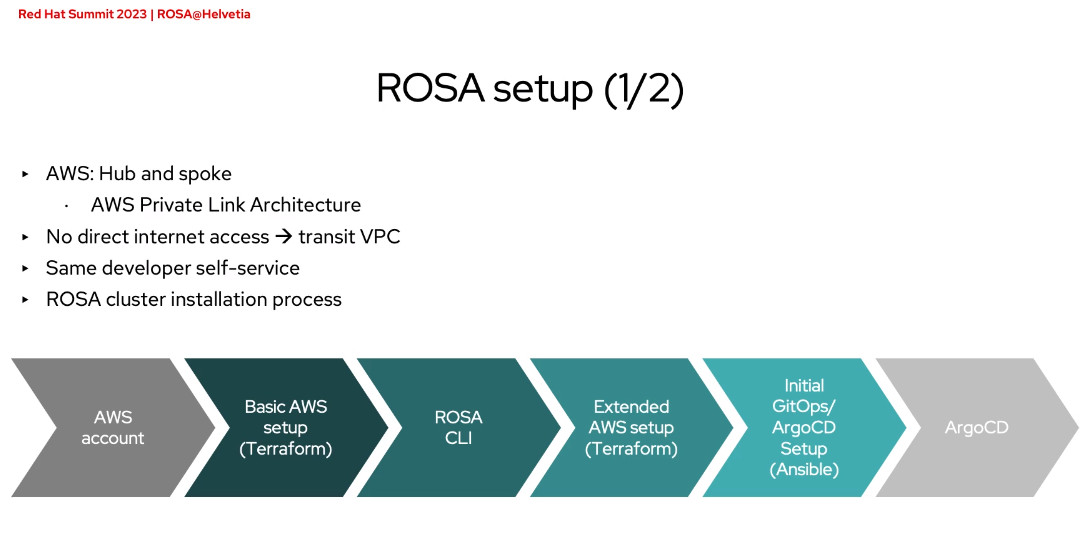Moving from self-managed to managed OpenShift: Red Hat OpenShift Service on AWS at Helvetia
Helvetia is a leading insurance company provider in Europe and offers several products including non-life insurance, life insurance, group reinsurance, and non-insurance for fee and commission businesses. Many of their older applications ran on Red Hat® JBoss® Enterprise Application Platform (JBoss EAP) and required Red Hat support in guiding their cluster operation teams and developers.
In looking to transition from a self-managed to a managed service, Helvetia chose Red Hat® OpenShift® Service on AWS (ROSA), which offered an integrated platform with several features like built-in support for CI/CD pipeline, logging and monitoring, and security and compliance tools.
Migrating to ROSA
In 2020, Helvetia migrated to Red Hat OpenShift 4.0 from Red Hat OpenShift 3.6. However, with the introduction of ROSA, they made the decision to move 60 product applications from the Red Hat OpenShift 4.0 cluster by the end of 2023. These consisted of new cloud-native apps and services, as well as legacy JBoss EAP apps, The migration presented a series of issues that required close partnership with the Red Hat team.

Why ROSA?
In comparison to their prior solution, ROSA was fit for their security, legal compliance, and customization requirements. Utilizing the ROSA CLI also simplified the cluster installation process, extended AWS setup with Terraform, and supported initial Red Hat OpenShift GitOps setup with Red Hat® Ansible® Automation Platform. Helvetia could now use the GitOps instance, which configures clusters. With ROSA, cluster configuration could be removed. All cluster configurations and adjustments were kept in a single GitOps repository and followed the Argo CD application pattern.
A repository hosted by GitHub Enterprise uses merge checks for high code quality, enforces filename and folder structure conventions, and checks formatting and semantics. For compliance, every pool request undergoes a review by a team member to increase accountability and reduce risk of errors, fraud, or any other malicious activities.
Benefits of ROSA
While Helvetia is still in the process of migrating all of their applications to ROSA, they’re already starting to see positive outcomes. Some of the benefits include:
- Lower subscription costs compared to the Red Hat OpensShift Container Platform version
- Faster and simpler cluster setup using the ROSA CLI
- Red Hat site reliability engineer (SRE) team management of cluster operations
- Better features like ROSA-controlled cluster monitoring, cluster resolution when upgrades fail, node health care, cluster backups, compliance and security hardening nodes, and disaster recovery
- Scaling more clusters with less effort, providing a competitive advantage to their business
- Red Hat Advanced Cluster Security for Kubernetes (ACS) to scan running images for vulnerabilities
To watch the full presentation on how Helvetia made this migration happen, see the discussion here. Note: you will need a Red Hat account to view the video.
